After posting David Goldblatt’s famous swimsuit photo, I sort of felt like I had to do a post on Rineke Dijkstra.
I don’t actually know Rineke Dijkstra’s work that well, and I’m not sure if the photo above is her most famous or not, but it might be: peeps love to compare it to Botticelli’s Birth of Venus. They love to compare because the Dijkstra is so much like the Botticelli, and is so much not like the Botticelli.
When you do a Google Images search, of course, all kinds of things can and do come up. And then you have to evaluate what you got… and decide if it is what you wanted. The photo below came up as one of the top results for “Rineke Dijkstra,” and so as I stared at the little thumbnail, I had to decide if the image actually was by her.
1. Look at image.
2. This image might be by Rineke Dijkstra.
3. Look closer.
4. This image is definitely not by Rineke Dijkstra.
5. Refer to text and figure out why search pulled it up.
It turns out, Google Images pulled the above image because the accompanying text reads, “Blake Fitch’s work is often compared to Rineke Dijkstra.”
I’m pretty sure that the person who wrote that sentence was trying to compliment Blake Fitch’s work. I’m pretty sure that the person who wrote that sentence was trying to elevate Blake Fitch’s work to the level of Rineke Dijkstra’s work.
I’m pretty sure that sentence was a bad idea.
Taken by itself, Blake Fitch’s photo is a nice photo. Claimed to be “like” Rineke Dijkstra’s work, the viewer is forced to realize all that Dijkstra’s works is… and, no offence, but, all that Fitch’s work is not.
The young woman in the Rineke Dijkstra photo below is probably less “pretty” that most swimsuit “girls” you’ve ever seen. Even though she is younger than the woman in the Blake Fitch photo, the Dijkstra girl will probably never be as “pretty” as the Fitch woman.
The young woman in the Dijkstra photo is so much more “beautiful” than any of those swimsuit models, it is overwhelming. It is leveling. It is difficult to truly, deeply look at this image without finding tears in my eyes.
The woman in the Fitch photo is confident. I might like her. I might be able to be proud of her. No matter how long I consider her picture, there are never tears in my eyes.
To understand the extraordinary Rineke Dijkstra image above, we need to do a brief review of the history of the representation of women in art.
kk, first there was painting: since more-or-less forever, white guys have made paintings of naked chicks. Yeah, yeah, it’s “high art,” but it’s also soft-core porn. The brilliance of this scheme was that you didn’t have to keep it in a brown paper bag till you got to the alley… you got to consume these women as objects in the most esteemed halls of the culture. I have to admit: clever, clever boys!
In modern times the Guerrilla Girls put up a billboard reading “Do I have to be naked to get into the Metropolitan Museum of Art?” noting that the majority of the nudes in the museum were of women, yet the majority of the paintings were by men.
Then in 1863 Victorine Meurent boldly went where no woman had gone before. Like the ronin avatars of today who claim their own identity, independence, and sentience, Meurent leapt from the canvas into the world and empowered herself as a real person.
Unlike Venus who gazes off as the male gaze consumes her soft, porcelain flesh, Meurent gazed back. Perhaps Meurent was the first woman to own her own gaze. She claimed her gaze for herself as equal to the male gaze that sought to consume her; she claimed her body for herself: “this is mine.”
When you look at the works that Meurent created today, you might not be that impressed, but in 1863, I believe what she did was extraordinary. I truly believe that every pop star, female or male, who ever stared into an MTV lens with confidence and attitude, owes something to Victorine Meurent.
What Meurent did was extraordinary, but so many pop stars with attitude later, it seems like everybody is a superhero.
Which more or less brings us to today:
1. I’m pretty sure we don’t want to be objects anymore
2. I’m pretty sure there aren’t really any superheroes
3. If there were superheroes, their ideology would probably be closer to Fox News that to mine, so, actually, we’re better off without superheroes anyway.
Which more or less brings us to Rineke Dijkstra, who gives us people who are neither objects, nor superheroes, but who are real human beings.
I actually believe the confidence I see in the Fitch woman. Pop stars, politicians, and various others try to convince us that they feel that way all the time. Service workers at most places are not allowed to be as real as the Dijkstra woman, they are required to be as plastic as the food.
And that is why the Fitch photograph would never be a Dijkstra photograph. And that is why name-dropping to up the cache of your work isn’t always such a good idea. And that is why the Dijkstra photograph is so overwhelmingly powerful in it’s simplicity.
Does anybody have a tissue?

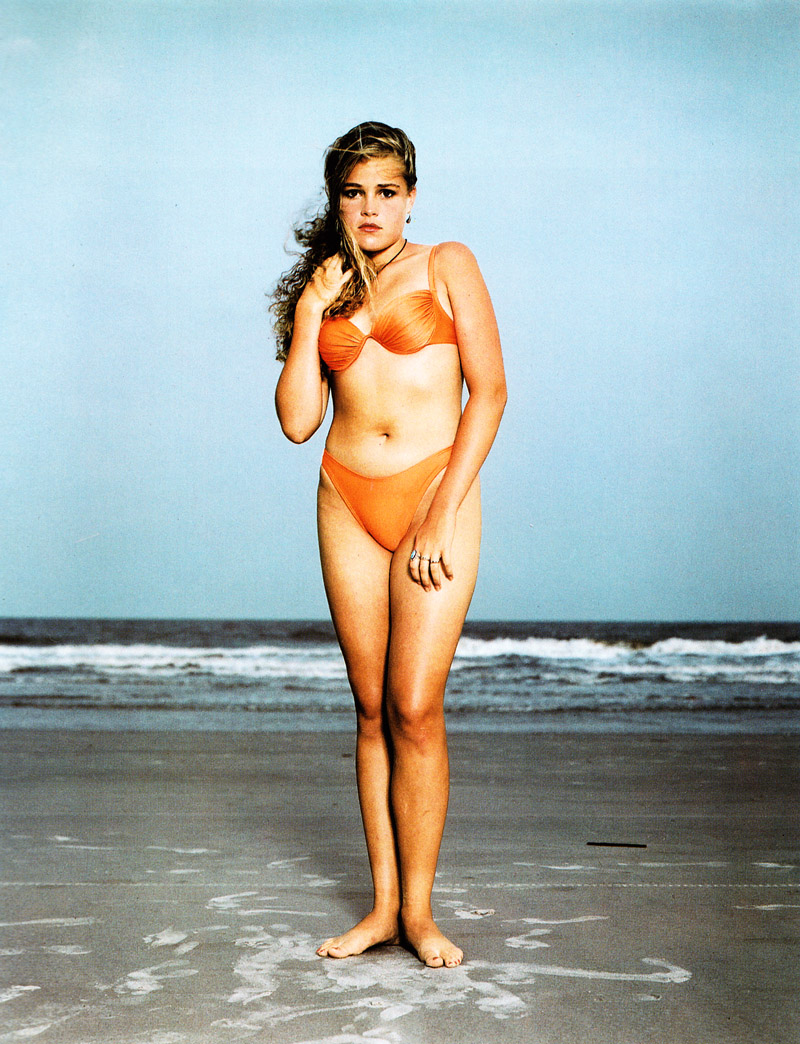
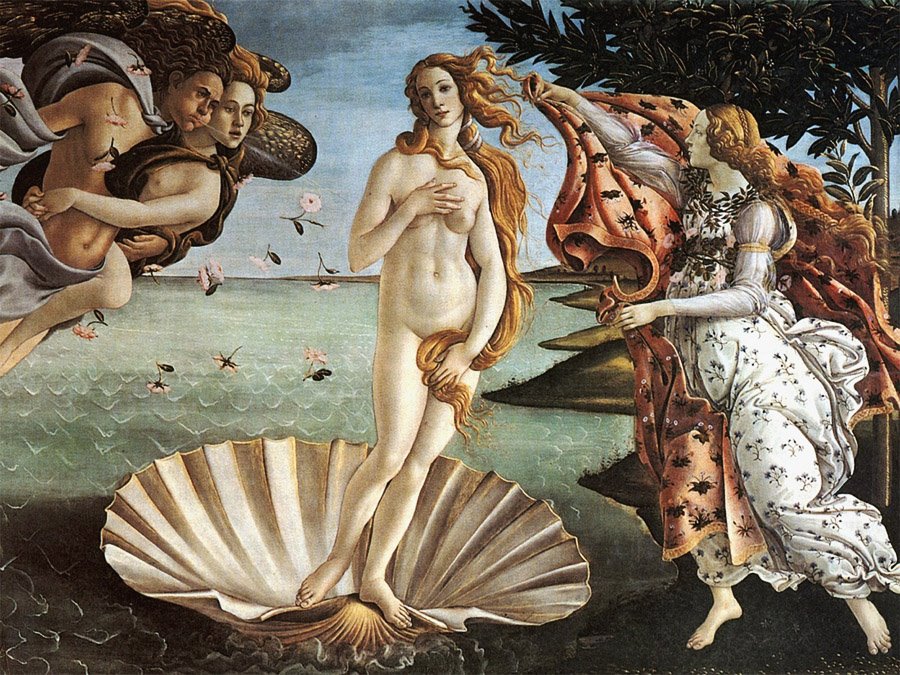
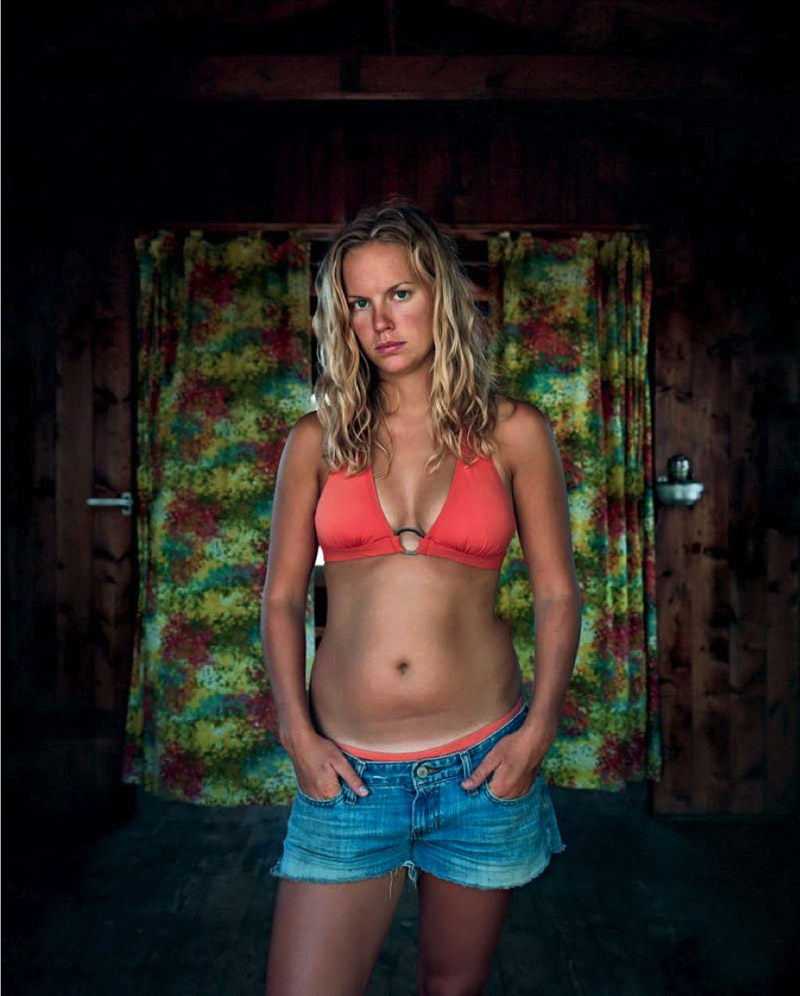
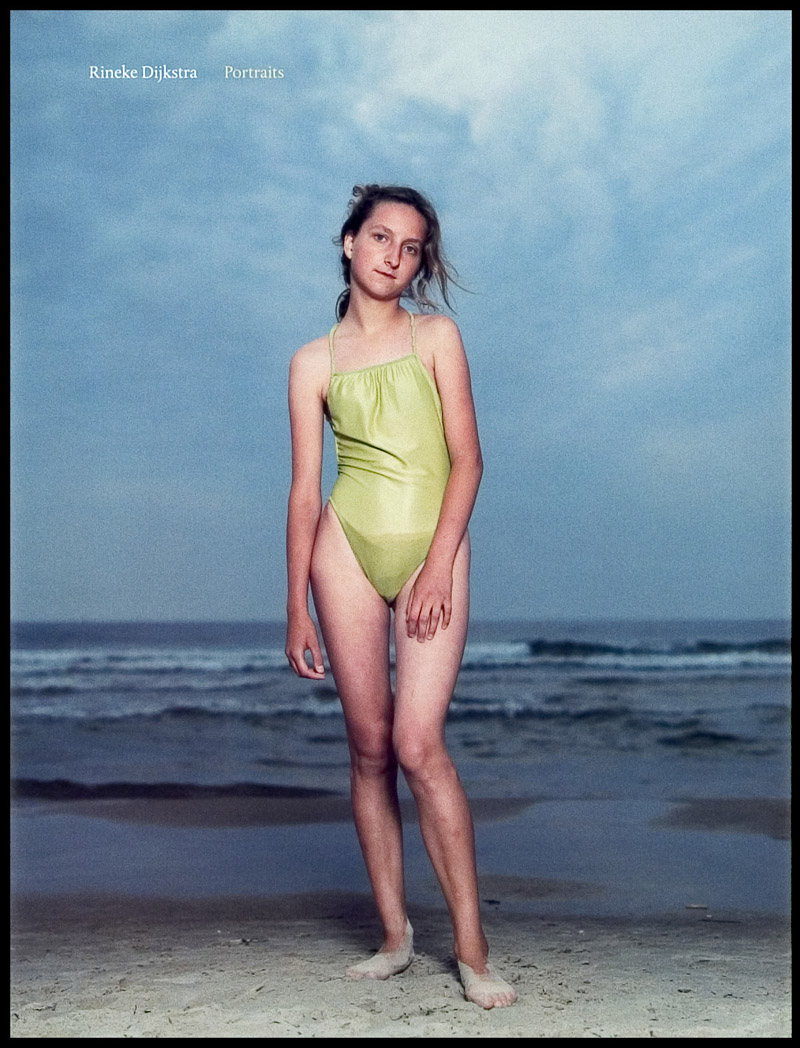
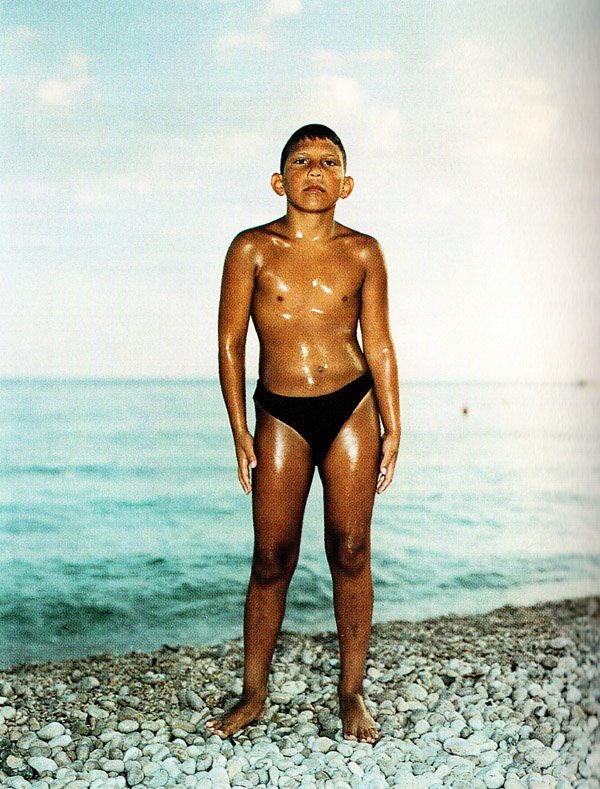
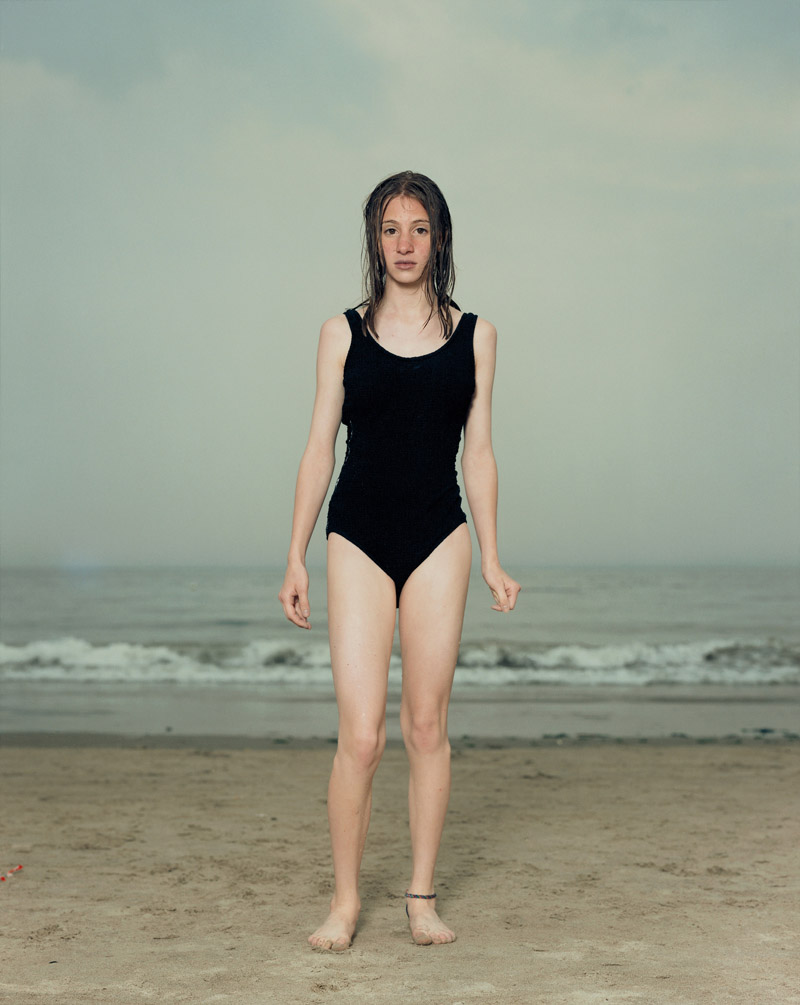
beautiful
Love.
Also, Blake Fitch’s photo is loud and noisy. It`s not inviting us in.
Rineke Dijkstra’s work is quiet, timeless and welcoming. Love it.
Forgot to say that Blake Fitch’s photo is boring. We have seen thousands of that picture before. Only with a different model and different background. Different photographer.
Still the same.
Rineke Dijkstra`s work is unique.